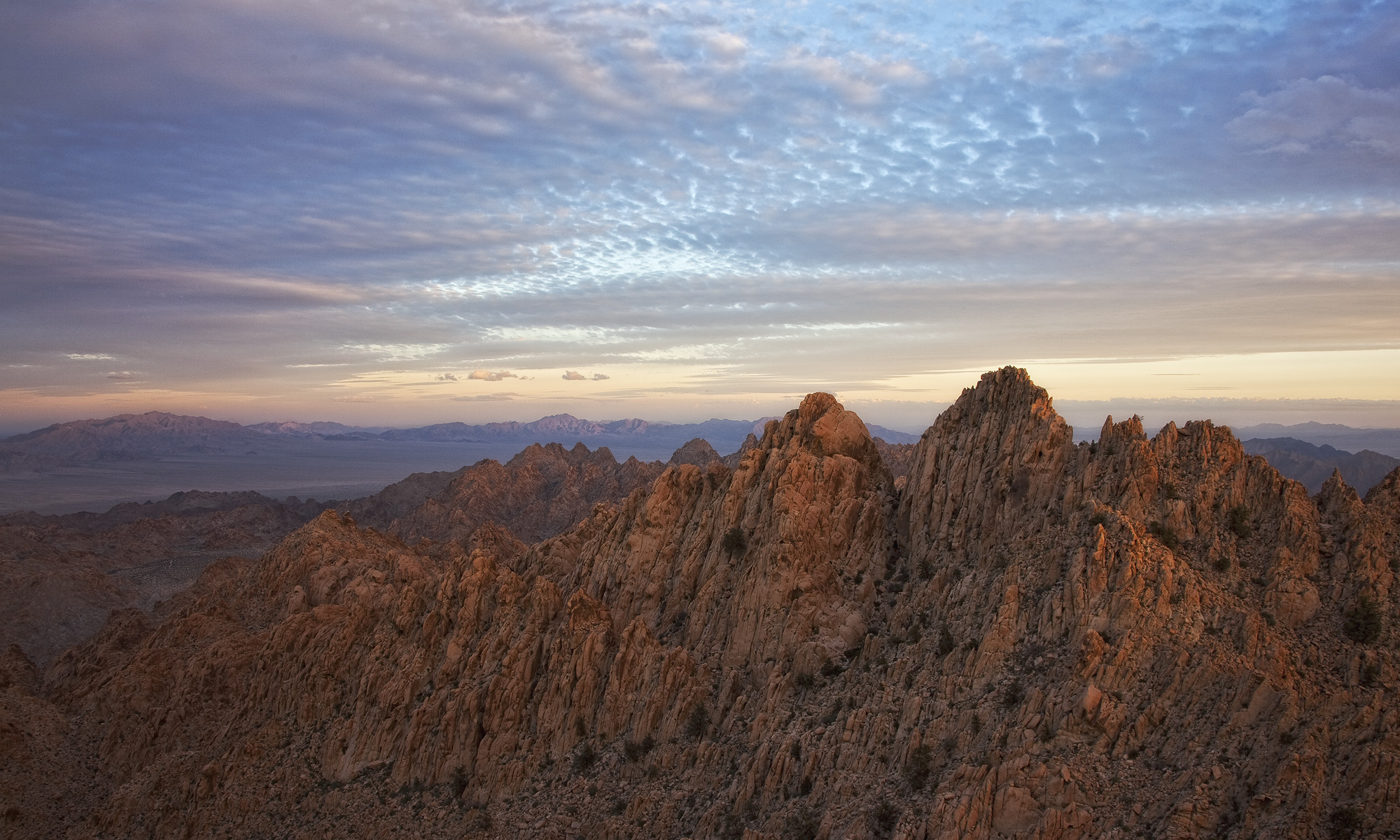Contrary to their name, the Little Chuckwalla Mountains certainly don’t lack for big views. You won’t find a lack of imposing topography, any water, and you’re unlikely to run into anyone else out there, hardly making them the little sibling of the Chuckwalla Mountains to the west. If you’re looking for solitude in a rugged desert landscape, the Little Chuckwalla Mountains Wilderness may be for you.
Despite their impressive nature, most people traveling I-10 between southern California and Phoenix know the Little Chuckwalla Mountains as just another ‘nameless’ mountain range seen from the car window. However, of all the places I talk about in this project, none may be of more current conservation importance than the Little Chuckwallas and the area that surrounds them–the Chuckwalla Bench. In February, I went on a solo backpack into the Little Chuckwallas Mountains Wilderness to get to know the area for myself.
Little Chuckwalla Mountains Wilderness
The Wilderness that surrounds the Little Chuckwalla Mountains was established in 1994 as part of the California Desert Protection Act. At just over 28,000 acres, it’s a relatively small wilderness and encompasses the mountains and bajadas directly surrounding them.
The Little Chuckwallas–like other the mountain ranges in this area–are part of the Basin & Range province. The rocks are made up primarily of Precambrian granite. Over the years, desert varnish has established itself on many of the rocks giving them a deep, rich brown color. Because of the volcanic nature of the area, many of the peaks here are old cinder cones that have a very striking appearance.
The bajada surrounding the mountains is made of a hard desert pavement, interlaced with deep washes and a rich woodland of ironwood, smoke tree, palo verde, and creosote. Barrel cactus, California snakeweed, and Alverson’s foxtail cactus (the latter two are sensitive species) grow in the mountains.
In addition to plant life, desert bighorn sheep roam the mountain slopes, and elusive burro deer can often be found in the bajada woodlands. Desert tortoises are also found along the flanks of the mountains and into the bajada. I’ve also heard rumors of gila monsters in the Little Chuckwallas, although I didn’t see any myself. This would be one of only a few populations on the California side of the Sonoran Desert.
The Chuckwalla Bench as critical habitat for desert tortoises
In 2016, near the end of his second term, President Obama signed the Desert Renewable Energy Conservation Plan into law. Essentially the law was a master plan for California’s desert. It set aside nearly 400,000 acres of land for renewable energy development and protected the rest.
Renewable energy is arguably cleaner than mineral extraction making it a necessary option for our ever-growing population. The lawmakers recognized this extrinsic, but also the intrinsic value in an intact desert. Ultimately, the DRECP which took nearly eight years to complete was applauded by multiple stakeholders and received bipartisan support.
The land area around the Little Chuckwalla Mountains Wilderness–the Chuckwalla Bench (see map here)–was listed as an area of critical environmental concern in the report, and was set aside specifically to protect it from renewable energy development. The Chuckwalla Bench extends from eastern Joshua Tree through the Chuckwalla Valley to the Colorado River. It represents one of the largest continuous desert tortoise habitats in North America. For a species whose population has declined 90% in some areas, and only 2% of hatchlings surviving to adulthood, protected habitat is the first of many things that can be done to help them–the Chuckwalla Bench has been identified by the US Fish and Wildlife Service as some of the best.
Despite protection, new threats are emerging
In early February, the Department of the Interior announced plans to overhaul the DRECP, expanding energy development to other parts of the desert beyond the original 400,000 acres. So far, no sound reasoning for this move has been given by the Trump administration. It doesn’t need to be said, but an overhaul of the DRECP could impact sensitive species like the desert tortoise or burro deer to such a point they would be gone forever.
It’s no wonder that Edward Abbey often felt a mix of happiness and melancholy in the desert he loved so much. Is Wilderness, as Abbey wrote, “the only thing worth saving?” Or maybe–again as the often contradictory writer said–Wilderness “is mainly a good place to throw beer cans on Sunday afternoons.”
My own trip into the Little Chuckwalla Mountain Wilderness was a welcome respite of solitude and quiet. I only saw one car on the dirt road I backpacked in from, several miles to the south of me. Otherwise I did not see any other signs of humans except for one old mine shaft on a hillside. I slept high on a ridge underneath the stars. Very few lights were visible in the distance.
In the morning, I watched the sunrise illuminate the Chuckwalla Bench all the way from the Colorado River eastward. As I sat there taking in the long view, I thought of the scientists and wilderness advocates who remind us that when it comes to energy development in wild places, restraint is the best practice. That’s truly the long view indeed.







